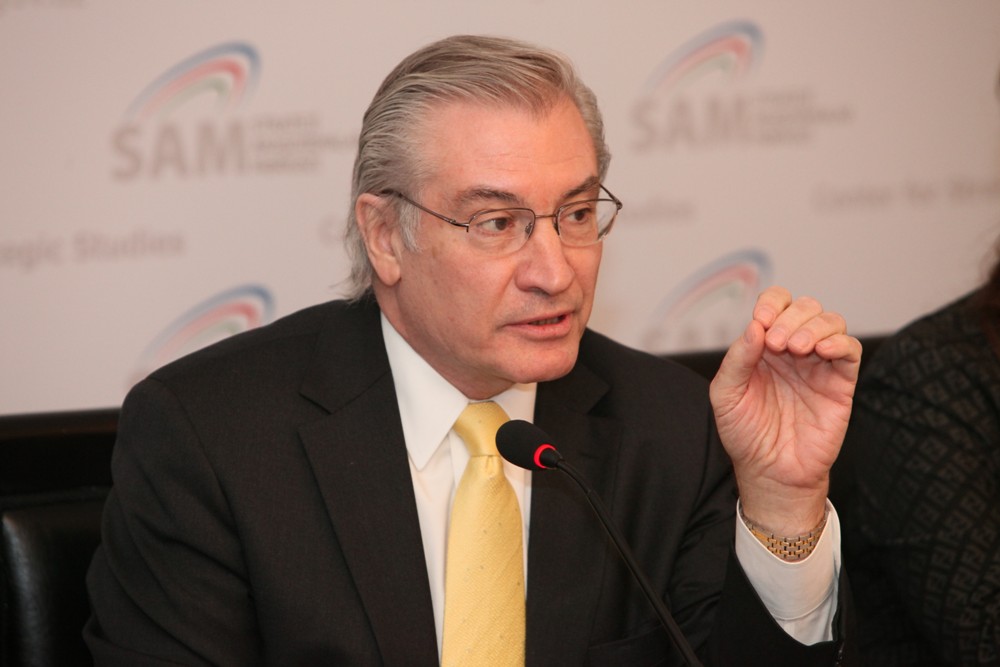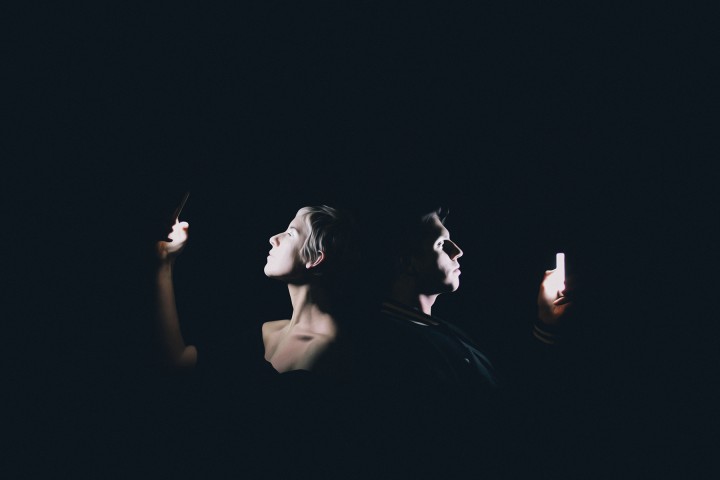By Lea McLellan and Carrie Eidson
Moogfest gets an added boost of brainpower this year with a rich lineup of panels and presentations. Xpress talked to three of those presenters to learn more about what Moogfest has to offer by day.
Claire L. Evans, lead singer of YACHT and editor-in-chief of OMNI Reboot, imagines how the year 3000 will sound, Jerome C. Glenn of the Millenium Project just might fuel some cyborg fantasies while discussing the future of creativity, and Bruce Walker of the Georgia Institute of Technology explains how music can communicate data.
In the year 3000
“Whenever a science fiction movie has a scene that takes place in a dance club or at a party — from the Mos Eisley cantina in Star Wars to the cave rave in the second Matrix film — the music is all wrong,” says Claire L. Evans. “If you really think about it, will music 1,000 years from now even sound like music to our ears? Likely not.”
Evans will appear at OMNI Reboot’s Science Fiction & the Synthesized Sound panel, where panelists will imagine, as Evans explains it, “how can we create music, and to a larger extent art, that is future-proof.”
Evans began exploring her interest in science journalism in college by writing “screwy little essays about string theory, narwhals, the moon and polar exploration.” Today, as both an editor at OMNI and a touring musician, she says that interest in science has actually inspired her music career.
“I realized the two pursuits informed one another and stopped compartmentalizing them,” Evans says. “YACHT is a product of whatever Jona [Bechtolt] and I are interested in — we write songs about space, death, utopias, connection and alienation. I figure if I stay curious and always investigate the things that fascinate me, it can only strengthen all my projects, be they journalistic or musical.”
Also appearing at the OMNI panel will be musician King Britt, writer Martine Syms, artist Neil Reinalda and astronomer Doug Vakoch, director of interstellar message composition at the SETI Institute, who will discuss the aesthetics of aliens.
How does all this relate to an electronic music festival? Evans is quick to point out the overlap between electronic music and people who are interested in the future. “After all, these are progressive tendencies; we all share a desire to test the limits of sound and vision,” Evans says. “And more and more, we are living in the future — science and technology are no longer niche interests. They are engulfing every aspect of our lives.”
Claire Evans will speak at the Masonic Temple on Saturday, April 26, at 1 p.m. — C.E.
The conscious cyborg
Jerome C. Glenn is a scientist, not a psychic, but he has still managed to make a career out of predicting the future — no crystal ball required. He’s the founder of the Millenium Project, a global think tank made up of futurists, scholars, business planners and policymakers. Together, they systematically identify future trends. He’ll share what he sees happening in the art and music world during his keynote address on the future of creativity.
Glenn says that the biggest trend that will affect the creation of music and art is the increasing popularity of conscious technology, or, “the common flow between the human consciousness and technology on a global basis.”
For instance, when you have a conversation on a phone, Glenn asks, are you talking to a person? Or are you talking to a machine? “To some degree you are in my office right now,” he says, “and in some sense I’m there. We know that isn’t really the case, but in this consciousness sense, there is that blurring between you’re here, and I’m there. Imagine that extended through all things.”
“With artificial intelligence,” he continues, “the physical environment starts to feel more alive as if it was a conscious partner.”
It’s true that much of his research centers on major global challenges like energy, ethics and democratization, and while music might not be the man’s M.O., he says he is coming to Moogfest because he believes that artists serve an important role in creating a better future. “Individual actions now affect the whole more than ever before,” says Glenn. “Artists can make information more exciting, more visually alive, more interactive, more entertaining. We can’t rely on the university professor writing the book with all kinds of data and charts. Who’s going to read it?”
He does, however, encourage Moogfest attendees to pick up the organization’s State of the Future report, a that study outlines 32 ways in which art could look different in the year 2020.
Jerome C. Glenn will speak at the Diana Wortham Theatre on Friday, April 25, at 10 a.m. — L.M.
The science of sound
Sonification may not be a word you’ve heard before, but it will be one of the key subjects discussed at the Sonification and Cybernetics panel, which features artist Neil Harbisson and Bruce Walker of the Georgia Institute of Technology. The term describes the use of sound to convey information or information about data. At least that’s the technical definition. Walker says you can also think of sonification as “a blend of science and art.”
“Most simply put, sonification is when you represent numbers or data with sound,” Walker says, adding that it’s easier for our brains to recognize patterns or trends in auditory rather than visual formats.
Walker’s interest in the field began when he was working with NASA to develop auditory systems that would relay information to astronauts about the International Space Station and its environment, but he quickly began to realize that learning math could pose a particular challenge for blind students. Not long after, Walker began developing software programs that used tones, pitches and spoken word to teach math, replacing traditional visual graphs with sound.
So how does all this relate to music? Walker says a key part of sonification is learning how to utilize pleasing sounds. “We look at musical theory and what is common in music and use that to build our sonifications,” Walker says. “We want to build things that are harmonious and that people want to listen to. If the output is a more pleasurable aesthetic, it can be more effective.”
Walker will discuss the relationship between sonification and electronic music, as well as the future of sonification. “We’re going to see sonification get more sophistication,” he says. “We’ll see more use of sound in driving, walking and navigation and certainly in more high-tech applications like medical diagnosis — applications like surgeons using sound to check for a tumor.”
Bruce Walker appears at the Masonic Temple on Thursday, April 24, at 1 p.m. — C.E.





Before you comment
The comments section is here to provide a platform for civil dialogue on the issues we face together as a local community. Xpress is committed to offering this platform for all voices, but when the tone of the discussion gets nasty or strays off topic, we believe many people choose not to participate. Xpress editors are determined to moderate comments to ensure a constructive interchange is maintained. All comments judged not to be in keeping with the spirit of civil discourse will be removed and repeat violators will be banned. See here for our terms of service. Thank you for being part of this effort to promote respectful discussion.